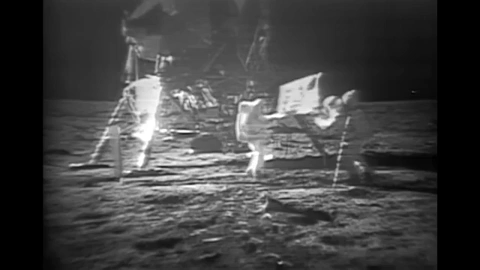Video
A little preview of my final sketchbook tour! This is the oldest filled sketchbook that I have. It’s from 2005 to 2007, which were my animation school years. My style was really different back then! The full sketchbook tour is 45mn long and I talk about my school assignments, my dad’s unexpected move to ouagadougou, and my weird obsession with fish.
Full video is available on Patreon! You can support me there for just $5 a month and get tutorial videos, step-by-steps, process vids, and more. Find it here: patreon.com/loish
3K notes
·
View notes
Photo










Vintage apartment in Berlin | photos by Robert Rieger
THENORDROOM.COM - INSTAGRAM - PINTEREST - FACEBOOK
13K notes
·
View notes
Text
dumbledore: anything you say in the next 30 seconds is free, starting now.
snape: i think your cocky. arrogant. bossy and pushy. you also have a god complex and show clear favouritism.
dumbledore: but-
snape: but what? i still have 22 seconds left and i’m not done.
369 notes
·
View notes
Photo
To hell with it

This is the Lucky Ace. Reblog to recieve a wad of cash that is oddly specific to your current needs.
438K notes
·
View notes
Photo

Exploring Hell… up for the challenge?
Venus is an EXTREME world, and we’re calling on YOU to help us explore it! NASA Jet Propulsion Laboratory is running a public challenge to develop an obstacle avoidance sensor for a possible future Venus rover.
With a surface temperature in excess of 840 degrees Fahrenheit and a surface pressure 92 times that of Earth, Venus can turn lead into a puddle and crush a nuclear-powered submarine with ease. While many missions have visited our sister planet, only about a dozen have made contact with the surface of Venus before succumbing to the oppressive heat and pressure after just about more than an hour.
The “Exploring Hell: Avoiding Obstacles on a Clockwork Rover” challenge is seeking the public’s designs for a sensor that could be incorporated into the design concept. The winning sensor could be the primary mechanism by which the rover detects and navigates around obstructions.
Award: 1st Place - $15,000; 2nd Place - $10,000; 3rd Place - $5,000
Open Date: February 18, 2020 ––––––––– Close Date: May 29, 2020
2K notes
·
View notes
Text
Duh and damn straight sister!

2K notes
·
View notes
Text
Hades: We got invited to two parties this weekend; Zeus' and Aphrodite's.
Persephone: Oh? Joy.
Hades: We're skipping both right?
Persephone: Obviously.
2K notes
·
View notes
Photo


Totally in love with Hades and Persephone?… give this a read!
899 notes
·
View notes
Text
me @ myself knowing full well I’d go dark side for an attractive villain

91K notes
·
View notes
Text
They Put a Flag on the Moon

It’s 1969 and Apollo 11 astronauts Buzz Aldrin and Neil Armstrong are the first humans to land on the Moon. In now iconic footage, Aldrin and Armstrong carefully assemble and maneuver an American flag to place on the lunar surface. The fabric unfurls, staying suspended without any wind to animate the stars and stripes. The flagpole sways precariously as the crew work to anchor it in the Moon’s low gravity at just 1/6th that of Earth’s. How did this moment come about? On Flag Day, let’s dive behind-the-scenes of what led to getting the American flag on the Moon 50 years ago.

Image: Astronaut Buzz Aldrin poses for a photograph beside the deployed United States flag during the Apollo 11 mission.
Seeking to empower the nation, President John F. Kennedy gave us a grand charge. The human spaceflight program of the early 1960s was challenged to work on missions that sent humans to the surface of another world. Following President Kennedy’s death in 1963, President Richard Nixon stressed a more international perspective to the Apollo missions. To reconcile the need for global diplomacy with national interests, we appointed the Committee on Symbolic Activities for the First Lunar Landing.

Image: NASA Administrator Thomas Paine and President Richard Nixon are seen aboard the USS Hornet, Apollo 11’s splashdown recovery vessel.
The committee, and the U.S. at large, wanted to avoid violating the United Nations Outer Space Treaty, which prohibited any nation from taking possession of a celestial body. After some debate, they recommended that the flag only appear during the Apollo 11 spacewalk. A plaque would accompany it, explaining that the flag was meant to stand for peaceful exploration, not conquest.

Image: The plaque reads “Here men from the planet Earth first set foot upon the Moon July 1969 A.D. We came in peace for all of mankind.” Under the text are signatures by President Nixon, Buzz Aldrin, Neil Armstrong, and Michael Collins.
A team of engineers at Johnson Space Center had three months to resolve several issues regarding the flag’s assembly. First, was the Moon’s lack of atmosphere. The flag, quite literally, could not fly the way it does on Earth. To address this, a horizontal crossbar was added to support the flag’s weight and give the illusion of it waving.

Image: NASA technician David L. McCraw shows the flag next to a Lunar Module mockup.
Second was the flag’s assembly, which had to be as lightweight and compact as possible so as not to take up limited storage space. The completed package, which was attached to Lunar Module’s ladder, weighed just under ten pounds. It received an outer case made of steel, aluminum, and Thermoflex insulation and blanketing to shield the flag from the 2,000 degree Fahrenheit spike from the Eagle’s descent engine.

Image: Component pieces of the flag assembly.
The last issue was mobility. Bulky spacesuits significantly restricted the astronauts’ range of motion, and suit pressurization limited how much force they could apply. To accommodate these limits, the team included telescoping components to minimize the need to reach and maneuver the poles. A red painted ring on the flagpole indicated how far into the ground it should be driven. Hinges and catches would lock into place once the pieces were fully extended.

Image: Diagram from the 1969 Apollo 11 press release illustrating astronaut spacesuit reach capabilities and ideal working height.
Fifty years after Apollo 11, the flag we planted on the lunar surface has likely faded but its presence looms large in United States history as a symbol of American progress and innovation.

Image: A close-up view of the U.S. flag deployed on the Moon at the Taurus-by the crew of Apollo 17, the most recent lunar landing mission.
The story doesn’t stop here. Anne Platoff’s article “Where No Flag Has Gone Before” sheds more light on the context and technical process of putting the United States flag on the Moon. You can also check out Johnson Space Center’s recent feature story that details its presence in later missions. Happy Flag Day! Make sure to follow us on Tumblr for your regular dose of space: http://nasa.tumblr.com.
2K notes
·
View notes
Text
For When I Fear Tommorow
Someday you will have to make a choice that will determine the course of your life (you will actually have to make hundreds of these but I don't wish to discourage you). This choice will feel like the most momental task; that it asks more of you than you could ever hope to give. It will feel like standing on the edge of a void that goes on in front without end.
But I beg of you this; when you feel like you might faulter before the fall, when your stomach churns with uncertainty and anxiety, think back to that early summer day in the midst of your childhood.
You stood then on the edge of a much more real kind of precipice but a no less frightening one to your young mind. Its the more you first jumped of a diving board. A then impossible distance with an unsure landing. Do you remember that moment? The moment you steeled your nerves and drew in that last deep breath. Then, as the dew lies drying on the fresh cut grass and with that cloying scent of clorine in your nose, you jump.
You jump.
In that moment you leave your fears behind and trust in nothing but yourself. Then the water caught you in it's grasp and held you only so long as it took you to reach the side to climb out and do it again.
I ask you to remember that moment when you fear what will come tomorrow, when you feel as though you can not take another step. Take a breath and remember the child who threw themselves into the arms of uncertainty for the hope of a better, more fun existence.
0 notes
Text
Ramen vs Pasta?
Ok, so ramen is a noodle but is it also a type of pasta? In theory, yes. In practice and in my head, no??? Someone explain?
1 note
·
View note
Photo

“if i’m flying solo at least i’m flying free”
colored pencil on black paper with ink detailing, one of my older ones that I recently dung out and decided to post.
4 notes
·
View notes




































